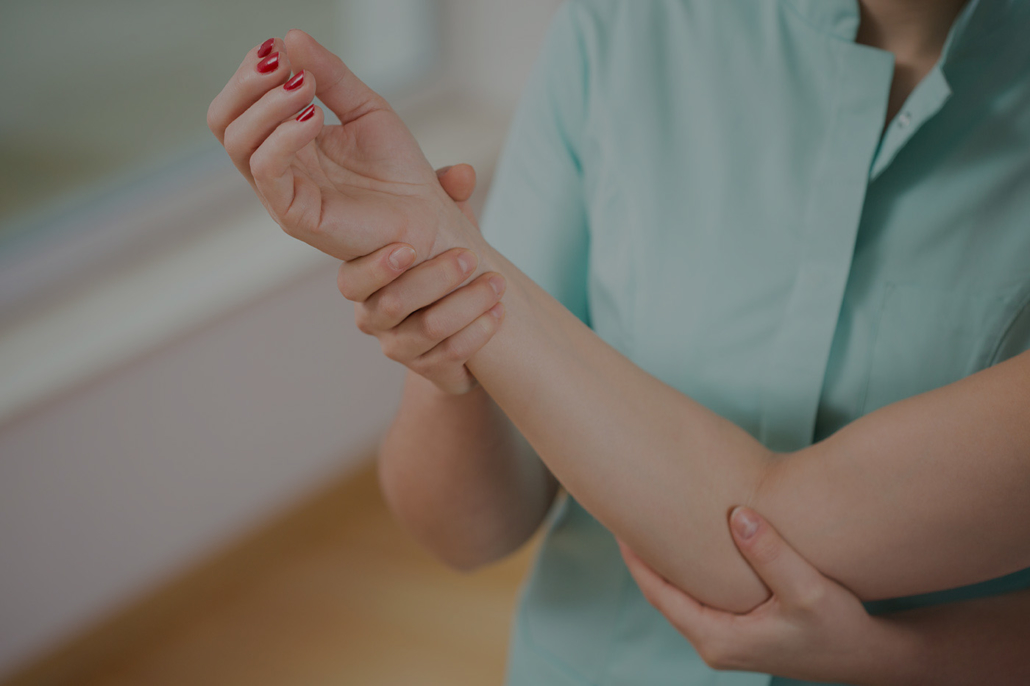What is Tennis Elbow?
/in Article /by Alta HealthTennis Elbow causes, symptoms, and treatments
Tennis Elbow, or Lateral Epicondylitis, is the inflammation occurring in the tendon on the outside of the elbow. This condition usually arises when the wrist is actively bent backwards repetitively, such as when hitting a one-handed backhand during tennis. Pain may be present in the elbow, forearm, and wrist.
Lateral Epicondylitis is a common injury for people who participate regularly in certain sports, including tennis or other activities which require this specific repeated movement of the arm.

What causes Tennis Elbow?
Repetitive movements of the wrist extensor muscles, specifically the Extensor Carpi Radialis Brevis, may lead to overuse of the tendons attached to the elbow. This muscle is a strong wrist extensor and can easily become inflamed when overworked, especially during a sport such as tennis.
Tennis Elbow is not restricted to athletes and those who play sport. While it commonly occurs in tennis players, many other non-athletic occupations require repetitive, forceful forearm extension movements such as plumbing, carpentry, painting and dentistry.
It is also possible to develop Tennis Elbow even without a history of repetitive, forceful forearm extension movements.
Tennis Elbow symptoms and when to see a professional
Symptoms of Tennis Elbow include pain near the elbow, as well as weakness in the forearm and wrist. Pain will primarily occur where the forearm muscles attach to the outside of the elbow. This pain may present itself during daily activities such as opening a car door, lifting grocery bags, or shaking hands with someone.
Pain in the elbow does not necessarily indicate Tennis Elbow. There are a range of common elbow conditions which may be present, including Golfer’s Elbow and bursitis. As such, when experiencing pain or discomfort in your elbow, it is advisable to talk to a qualified Physiotherapist or Exercise Physiologist.
A Physio or Exercise Physiologist can use a handheld dynamometer – a device often used in a clinical setting for accurately measuring force – to help diagnose Tennis Elbow and other concerns. This assessment involves a patient applying force to the dynamometer and describing the severity and location of the pain, which the practitioner can then assess and use for diagnosis.
How to treat Tennis Elbow
There are a range of options available for the most effective Tennis Elbow treatment. Eliminating symptom-provoking activities is the first steps towards recovery.
A brace may be used to relieve symptoms of Tennis Elbow by compressing and stabilising the injured tendon. A Tennis Elbow brace is worn on the forearm just below the elbow and should be applied snugly, with the support cushion placed on the outside of the elbow where the injured tendon needs support.
Non-steroidal anti-inflammatory drugs (NSAIDs) may also be taken to control inflammation and reduce pain. We recommend you consult your doctor before consuming any medication.
A Physiotherapist or Exercise Physiologist should be consulted in order to prescribe an appropriate exercise rehabilitation program. Most individuals suffering from Tennis Elbow will make a full recovery within a few months.
If pain persists, as a last resort, corticosteroid injections or in some rare cases surgery may be an alternative course of treatment.
How can VALD help with Tennis Elbow?
VALD recently launched a handheld dynamometer and inclinometer named DynaMo capable of performing more than 300 strength and range of motion tests.
Featuring five NFC-enabled Smart Attachments – including an adjustable Grip Strength Attachment – DynaMo allows practitioners to perform push and pull tests, measure grip strength and assess range of motion, with the objective data captured by the device stored automatically against a client’s profile.
By using DynaMo to measure the resistance of force to the wrist and any presence of pain, practitioners can more accurately diagnose Lateral Epicondylitis and prescribe an appropriate rehabilitation program.
To learn more about DynaMo and how dynamometers can be used in the treatment of common conditions like Tennis Elbow, visit: valdhealth.com/dynamo.

This article was written by Sasha Birge, a Physiotherapist currently pursuing a Master’s in Sports Physiotherapy, with a Bachelor of Science in Athletic Training and a background in strength and conditioning. Sasha has a specialist interest in sporting injuries and return-to-sport rehabilitation.


